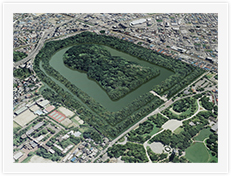TOP > Content Works
Castle
Nijojo Castle (2002)
Nijojo Castle was built in 1603 by the 1st shogun, Ieyasu Tokugawa, and completed by the 3rd shogun, Iemitsu Tokugawa. This production presents each part of the Ninomaru Palace based on the architecture of the time.
The wall paintings created by the Kano school have also been faithfully recreated with their original color and viewers can see the brilliance of the gold and silver leaf that shimmers in the light.
©TOPPAN, Supported by Nijojo Castle / Kyoto City Office
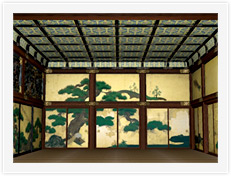
Edojo Castle (2007)
This production focuses on the Honmaru Palace in recreating Edojo castle, which was the residence of 15 generations of Tokugawa shoguns and the heart of the government of Edo. The original Tenshu (keep), which was not rebuilt after being lost to the great fire of the Meireki era, has been brought back to life in CG based on remaining drawings.
©TOPPAN Inc. / Edo-Tokyo Museum
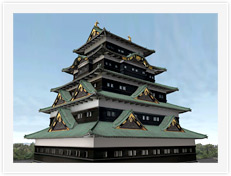
Kumamotojo: Unraveling the mystery of the invincible castle (2011)
Built by Kiyomasa Kato, the lord of Kumamoto in the 16th -17th century and the leading architect of castles at that time, Kumamotojo castle is known for its well-fortified structure and is considered one of the three premier castles in Japan today. With this VR production, Kumamotojo castle has been recreated as it was in the 18th century, before most of its buildings were burned down during wars in the 19th century. Looking down from the sky on several smaller castle towers from a bygone era, viewing the elaborate paintings of the main hall of the Honmaru Goten Palace or seeing various devices designed to prevent attackers from penetrating the castle, viewers will be able to try to unravel the castle’s mysteries.
Production / ©TOPPAN Inc.
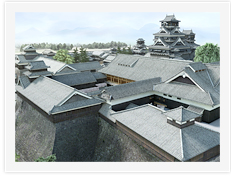
Magnificent Azuchi Castle (2014)
Azuchi Castle is known as the castle built and owned by a warlord, Oda Nobunaga. This castle was burned down in an unknown fire immediately after the death of Nobunaga. This happened just three years after its castellation. We perfectly reproduced Azuchi Castle, along with its castle building including the castle tower, the residences of vassals which were lined up on Mt. Azuchi, and the buildings of the castle town by taking full advantage of our VR technology. You can directly experience Azuchi Castle tracing back 400 years across time and space.
Production and supervision : Omihachiman City
Technical supervision : Tomohiro Fukuda (Graduate School of Engineering,Osaka University)
Castle keep restoration : Akira Naito (former president of Aichi Sangyo University)
Production : TOPPAN Inc.
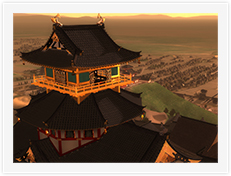
Shinto Shrine
NIKKO TOSHOGU SHRINE “YOMEIMON GATE” (2014)
A virtual reality (VR) production of Nikko Toshogu Shrine’s Yomeimon Gate (a designated national treasure of Japan) created using high-definition photographic data and 3D geometric measurement data. The 508 carvings on the gate are digitized. Carvings usually hidden from view in high places are shown in vivid detail by VR reproduction.
©Nikko Toshogu Shrine / TOPPAN Inc.
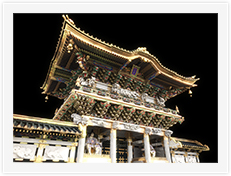
Nara
Toshodaiji Temple (1999, 2004, 2010)
Toshodaiji Temple was built in 759 by Ganjin Wajo and is typical of Tenpyo architecture. As well as digitizing the temple, this production also recreates the architectural structure of the Kondo main hall and the decoration and color at the time of construction. It is also possible to move peacefully around the Portrait Hall that houses wall paintings created by artist Kaii Higashiyama to provide Ganjin Wajo with scenery from Japan and his native China.
©TOPPAN Inc. / TBS, Courtesy of Toshodaiji
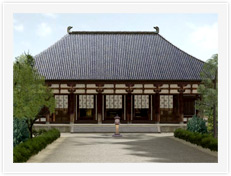
The Recreated Kohfukuji Chukondo / The Ashura Statue (2009)
With the “The Recreated Kohfukuji Chukondo” VR production, the Chukonndo hall has been recreated in VR images ahead of the completion of actual reconstruction which is currently being undertaken. “The Ashura Statue” VR production is the world’s first virtual reality representation of the Ashura statue, a national treasure that is a famous piece of Tenpyo sculpture and highly popular with its expression. The statue has been recreated in detail using ultra-high definition photography and the digital archiving knowhow that has been accumulated through 3D measurement and color measurement technologies.
©The Asahi Shimbun / TOPPAN Inc.
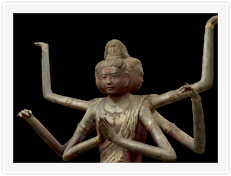
Nara Heijo-kyo Capital Where Japan Began (2010)
Heijo-kyo Capital is said to be the first authentic capital of Japan. Based on the latest research of the Nara National Research Institute for Cultural Properties, the “Nara Heijo-kyo Capital, the Birthplace of Japan” VR production recreates the Heijo-kyo Capital of the Nara period in photorealistic quality. This production was specially produced to be exhibited at the VR theater in the Heijo-kyo History Museum, which is the main pavilion at the Heijo Palace Site Area of the Commemorative Events for the 1300th Anniversary of Nara Heijo-kyo Capital. In the theater, VR images are displayed on a five-sided screen, covering nearly all viewing angles so as to provide viewers with an excellent sense of immersion.
© Nara Prefecture
Production: Dentsu Inc., TOPPAN Inc.
Supervision: Nara National Research Institute for Cultural Properties
Provision of Data: Ministry of Education, Culture, Sports, Science andTechnology
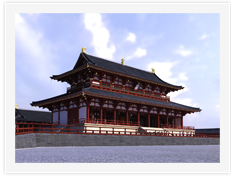
China
The Palace VR The Forbidden City : The Palace of Emperors (2003)
Toppan and China’s Palace Museum have established the Institute for Digitization of the Palace Museum Heritage and as part of joint research to preserve and display cultural heritage through digital archiving, are working to recreate in virtual reality the entire Forbidden City of the height of the Qing Dynasty (1660s-1790s).
©The Palace Museum/TOPPAN Inc.
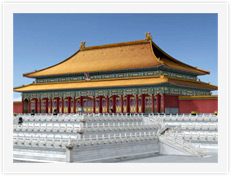
The painted Terra-cotta Warriors (2006)
The Terracotta Warrior Pits of the mausoleum of the first Qin Emperor are said to be the greatest archaeological discovery of the 20th century in China.
Around 8,000 terracotta warriors are buried in them. This production recreates the Pit One of today where digging continues and enables viewers to enjoy spectacular scenes from angles which cannot be achieved at the site itself. It also recreates the terracotta warriors painted in the vivid colors of when they were first created, 2200 years ago.
Production / ©TOPPAN Inc. ,TBS
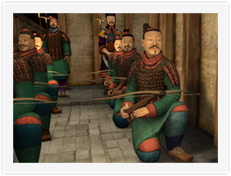
Europe
The Sistine Chapel (1998)
This production recreates the entire interior of the Sistine Chapel that was constructed in the Vatican in the late 15th century. With the spectacular altarpiece and ceiling painted by Michelangelo, it is known as a gem of renaissance art. The VR production allows viewers to move freely through the tranquil chapel and carefully look at the frescos from the point of view of their painter Michelangelo.
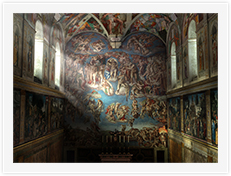
The Plantin-Moretus Museum in Antwerp, Belgium (2005)
The Plantin-Moretus Museum in Belgium’s Antwerp is known as the world’s oldest printing and publishing museum and preserves a printing house that dates back to the 16th century. With this production, we have created everything in the space, including the printing presses and type, in photorealistic computer graphics. A streamlined production method was developed through a combination with hi-vision live action video.
©TOPPAN / Printing Museum,Tokyo / Museum Plantin-Moretus / Printroom,Antwerp
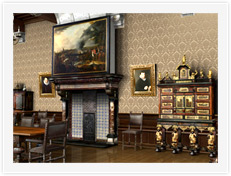
The Assumption Cathedral (2007)
The Assumption Cathedral is a World Heritage site located in the center of the Moscow Kremlin.
Its name in Russian, “Uspensky”, means “the sleep of the blesed mother” and it contains a collection of highly valuable treasures of religious art from the Russian Orthodox Church including numerous icons that adorn the iconostasis, and frescos that fill the walls and pillars. This production shows the magnificent interior of the cathedral and also recreates images of the coronation of Russian Tsars.
Production / ©Moscow Kremlin Museums, TBS, TOPPAN Inc. , Courtesy of DENTSU
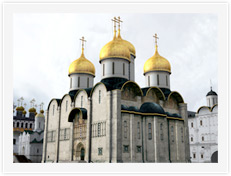
IMPERO ROMANO POMPEI 《COMPOSIZIONE DI GIARDINO》 (2009)
This VR production features “The House of the Golden Bracelet”, part of the Pompeii ruins which is not usually open to the public. It has been produced under the supervision of Masanori Aoyagi, the Director of The National Museum of Western Art. Pompeii is well known as a town of tragedy buried by ash from volcanic eruptions. This production recreates “the luxurious lifestyle of the people of ancient Pompeii”, which has been revealed by excavations.
©The Tokyo Shimbun & TOPPAN Inc.
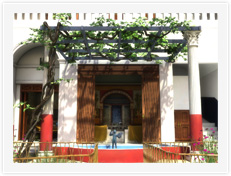
Ancient civilization
COPAN (2002)
The Maya Civilization Copan kingdom was located in what is now the Republic of Honduras in Central America and was a famous ancient city from the period 250 to 900. This production enables viewers not just to see the temple remains above ground but also the former appearance of the city and the temple of the first king, which is buried underground. Viewers can experience the buildings’ original color and actual size.
©NICT / realized by TOPPAN
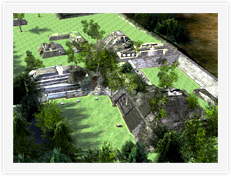
Nasca (2006)
The Nasca Lines are drawn into vast plains located around 400 kilometers south of Peru’s capital Lima. This production uses CG to recreate them and the surrounding natural environment. Viewers can observe the lines as if looking down from a Cessna airplane flying above them.
©TOPPAN Inc. / TBS
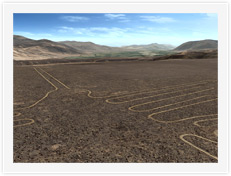
Angkor Ruins The Bayon Temple and its Faces (2007)
The Bayon Temple is in the center of Angkor Thom, the walled city built in the 12th century by Jayavarman VII in the Khmer Empire, which was in the modern Kingdom of Cambodia. The temple is around 150 meters in four directions and 43 meters tall. This is the first VR production to use the world’s largest scale 3D shape measurement data for a manmade structure.
©TOPPAN
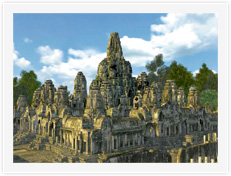
Egypt’s Sunken Treasures - The Ancient Cities of Alexandria (2009)
During Egypt’s last dynasty, the Ptolemaic Dynasty (305BCE to 30BCE), there were the prosperous ancient cities of Alexandria, Canopus and Heracleion. It is said that the valuable ruins that display their majesty sank to the seabed by around the 8th century due to natural occurrences. Based on the latest findings of excavations and past research materials, the VR production recreates the underwater ruins and the ancient cities.
Production / ©The Asahi Shimbun, TOPPAN Inc.
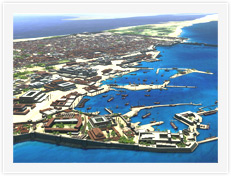
Machu Picchu – The Sanctuary of the Sun (2012)
The Machu Picchu site is located on a mountain ridge 2,400 meters above sea level in Peru. For the first time ever, 3D measurement of the entire site was performed and the resulting data was used to recreate the site in detail in virtual reality. This production was exhibited as a 3D movie based on Toppan’s original guidelines for stereopsis content that does not obstruct viewers’ accurate recognition of cultural properties.
©TOPPAN Inc. / TBS
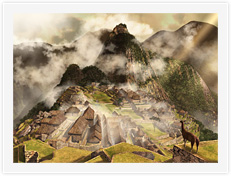
Mozu Kofungun, Ancient Tumulus Clusters - Transcending the Time (2014)
We have produced a virtual reality (VR) work of Mozu kofungun including the Emperor Nintoku mausoleum, the world's largest keyhole-shaped tumulus, by using laser measurement, aerial photographs, and actual measurement such as terrain data. Not only the current shape, but the ancient tomb at the time of construction was reproduced with the clay figure and stone chamber. Bird's eye view from the sky, the place that now is prohibited to enter, setting foot on ancient burial mounds, such experiences you can enjoy by VR technology.
Supervisor : Taichiro Shiraishi
Planning and Producement : Sakai City Government
Production : Total Media Development Institute Co., Ltd. / TOPPAN Inc.
